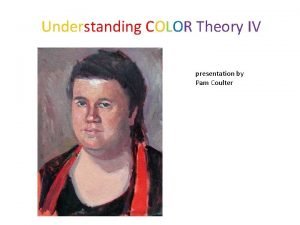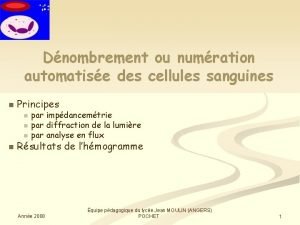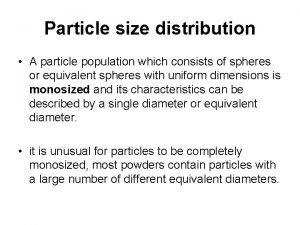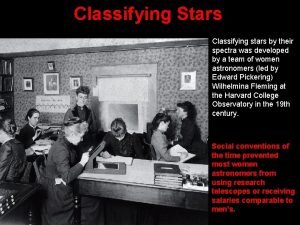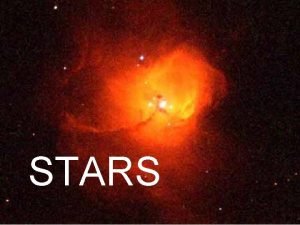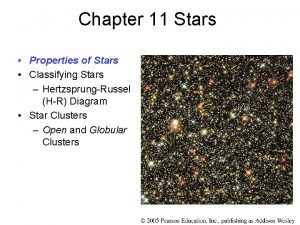CHARACTERISTICS OF STARS COULTER CLASSIFYING STARS Characteristics used







- Slides: 7

CHARACTERISTICS OF STARS COULTER

CLASSIFYING STARS • Characteristics used to classify stars include color, temperature, size, composition, and brightness

COLOR AND TEMPERATURE • A star’s color reveals it temperature. • Cooler stars with a surface temperature of 3, 200 C appear red. • Stars with a surface temperature of 5, 800 appear yellow. • The hottest starts over 20, 000 C appear bluish.

SIZE • Many stars are about the size of the sun, which is a medium sized star. • White dwarfs are about the size of Earth. • Neutron stars are about 20 KM (smallest) • Giant stars and super giant stars. If our sun were a super giant star it would fill our solar system as far out as Jupiter.

COMPOSITION • Stars vary in chemical composition. Most are about 73% hydrogen, 25% helium, 2% other elements. • Spectrograph is a device that breaks light into colors and produces an iage of the resulting spectrum. (most large telescopes have these) • Each chemical element absorbs light at particular wavelengths.

BRIGHTNESS OF STARS • The brightness of a star depends upon both its size and temperature. • How bright a star looks from Earth depends on both its distance from Earth and how bright the star truly is. • Star can be described as apparent brightness and absolute brightness. • Apparent brightness- its brightness as seen from Earth. • Absolute brightness- is the brightness the star would have if it were at a standard distance from Earth. (need to calculate its apparent brightness and distance to get the absolute brightness of a star)

MEASURING DISTANCES TO STARS • The light-year is a unit astronomers use to measure distances between the stars. • Light-year is the distance light travels in one year (about 9. 5 million km) • Light-year is distance not time: example if it took 1 hour to ride a bike 10 km, you could say it took you 1 bikeyear to get to the mall. • Parallax: is the apparent change in position of an object when you look at it from different places. Movie theater example:


